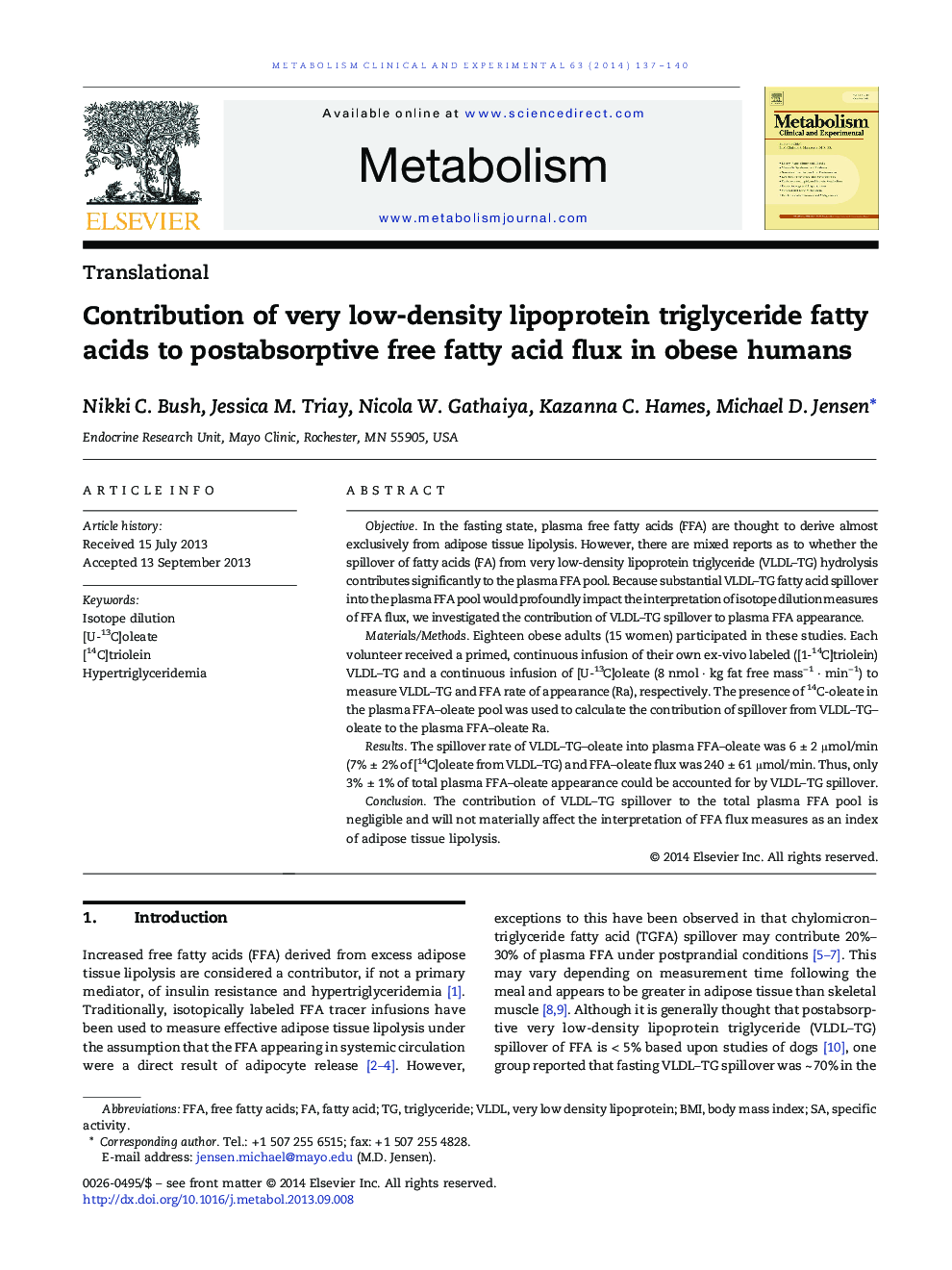| Article ID | Journal | Published Year | Pages | File Type |
|---|---|---|---|---|
| 2805812 | Metabolism | 2014 | 4 Pages |
ObjectiveIn the fasting state, plasma free fatty acids (FFA) are thought to derive almost exclusively from adipose tissue lipolysis. However, there are mixed reports as to whether the spillover of fatty acids (FA) from very low-density lipoprotein triglyceride (VLDL–TG) hydrolysis contributes significantly to the plasma FFA pool. Because substantial VLDL–TG fatty acid spillover into the plasma FFA pool would profoundly impact the interpretation of isotope dilution measures of FFA flux, we investigated the contribution of VLDL–TG spillover to plasma FFA appearance.Materials/MethodsEighteen obese adults (15 women) participated in these studies. Each volunteer received a primed, continuous infusion of their own ex-vivo labeled ([1-14C]triolein) VLDL–TG and a continuous infusion of [U-13C]oleate (8 nmol · kg fat free mass− 1 · min− 1) to measure VLDL–TG and FFA rate of appearance (Ra), respectively. The presence of 14C-oleate in the plasma FFA–oleate pool was used to calculate the contribution of spillover from VLDL–TG–oleate to the plasma FFA–oleate Ra.ResultsThe spillover rate of VLDL–TG–oleate into plasma FFA–oleate was 6 ± 2 μmol/min (7% ± 2% of [14C]oleate from VLDL–TG) and FFA–oleate flux was 240 ± 61 μmol/min. Thus, only 3% ± 1% of total plasma FFA–oleate appearance could be accounted for by VLDL–TG spillover.ConclusionThe contribution of VLDL–TG spillover to the total plasma FFA pool is negligible and will not materially affect the interpretation of FFA flux measures as an index of adipose tissue lipolysis.
